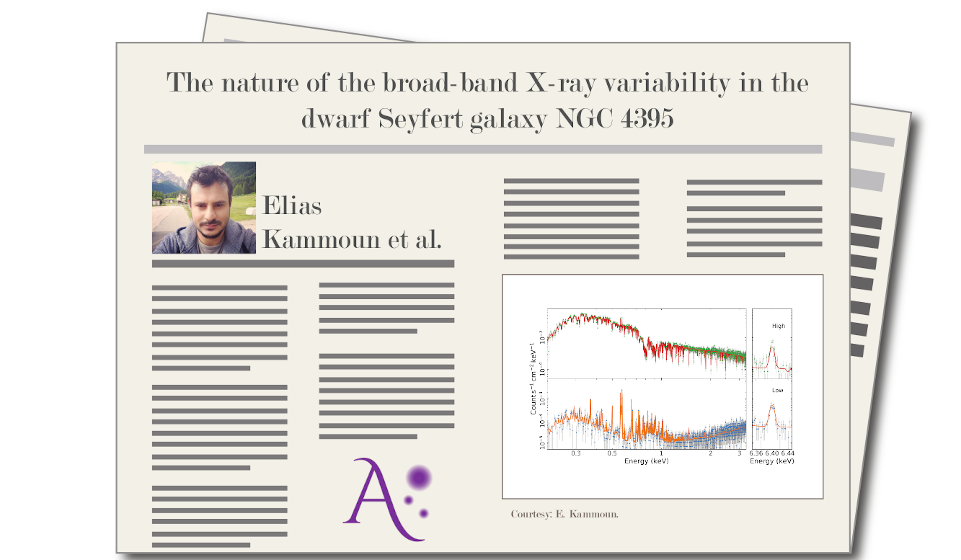
The nature of the broad-band X-ray variability...

By Elias Kammoun
It is commonly accepted that Galactic X-ray binaries (GXB) and active galactic nuclei (AGN) are powered by accretion of matter, in the form of a disk, onto a central black hole (BH) of mass MBH ~ 3-20 M⊙ and MBH~106-9 M⊙ for GXB and AGN, respectively. However, the 102-6 M⊙ region of the parameter space, a.k.a. intermediate mass BHs, remains poorly studied. These BHs are thought to reside in globular clusters and dwarf galaxies. A better understanding of these objects is of particular importance for constraining models of BH seed formation.
The dwarf Seyfert 1.8 galaxy NGC 4395 (d=4.2 Mpc) with MBH ~ 104-5M⊙ can be considered to lie at the highest end of the IMBH representing a scaled-down (by ~2 orders of magnitude) version of more massive and more luminous Seyfert galaxies. In this paper we studied the broad-band X-ray spectra of NGC 4395, using multi-epoch observations with XMM-Newton and NuSTAR. We could explain the extreme variability of the source by a combination of absorption variability (occuring on short and long timescales) and intrinsic variability (by a factor of ~3). Our results show the presence of three layers of variable absorption: neutral, mildly ionized, and highly ionized.
We also show that Athena/X-IFU will allow us to probe the variability of this source with high accuracy on short timescales. This will help us identify any gradient in that could be present absorbing material, as well as studying its motion. In addition, the high resolution of X-IFU will be able to map the innermost region of the accretion disk, by tracking the short timescale variability of the absorber.

